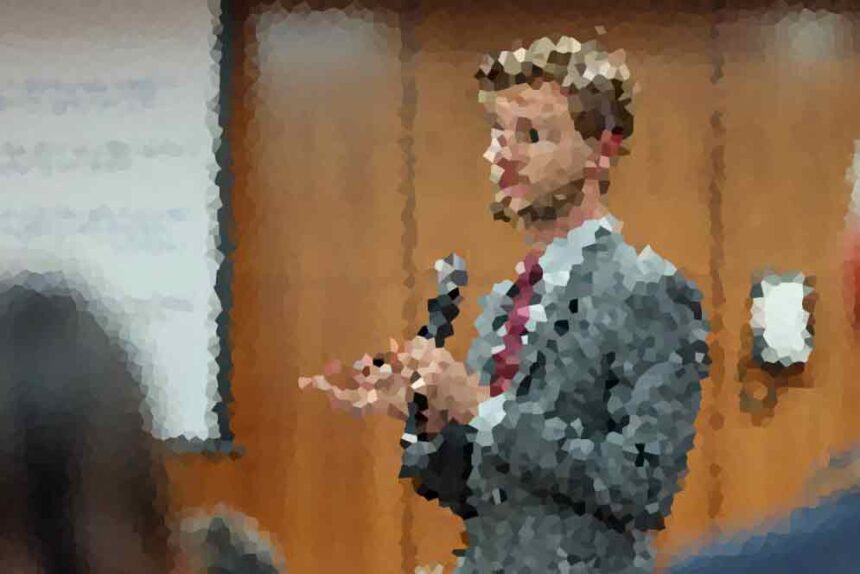In today’s rapidly evolving job market, virtual job interviews have become a cornerstone of the hiring process. With remote work and digital communication technologies on the rise, mastering the art of the virtual interview is critical for job seekers aiming to secure their dream roles. However, many candidates unknowingly sabotage their chances by making avoidable mistakes. We’ve compiled an in-depth guide on the top 10 mistakes to avoid in a virtual job interview, offering actionable insights to ensure you present yourself as a polished, professional, and prepared candidate. By addressing these common pitfalls, we aim to help you stand out and make a lasting impression on hiring managers.
1. Failing to Test Technology Before the Interview
A virtual job interview relies heavily on technology, and failing to prepare your equipment can lead to disastrous outcomes. Technical glitches, such as poor internet connections, malfunctioning microphones, or outdated software, can disrupt the flow of the interview and signal a lack of preparedness.
-
Check Your Internet Connection: Ensure you have a stable, high-speed internet connection. Test your Wi-Fi or Ethernet connection at least a day in advance to confirm consistent performance. If possible, have a backup connection, such as a mobile hotspot, ready in case of unexpected issues.
-
Test Audio and Video Equipment: Use your computer’s camera and microphone to conduct a mock interview with a friend or family member. Verify that your audio is clear, without background noise, and that your video feed is sharp. Invest in a quality external microphone or webcam if your built-in devices are subpar.
-
Update Software: Confirm that your video conferencing platform (e.g., Zoom, Microsoft Teams, or Google Meet) is updated to the latest version. Outdated software can cause compatibility issues, leading to delays or crashes during the interview.
-
Familiarize Yourself with the Platform: Each video conferencing tool has unique features, such as screen sharing or virtual backgrounds. Practice using these tools to avoid fumbling during the interview.
By dedicating time to test and troubleshoot your technology, you demonstrate professionalism and foresight, ensuring a seamless virtual job interview experience.
2. Ignoring Your Interview Environment
Your physical environment plays a significant role in shaping the interviewer’s perception of you. A cluttered, noisy, or unprofessional background can distract from your qualifications and leave a negative impression.
-
Choose a Quiet Location: Select a space free from interruptions, such as barking dogs, ringing phones, or household chatter. Inform family members or roommates about your interview schedule to minimize disruptions.
-
Declutter Your Background: A clean, neutral background is ideal. Remove personal items, posters, or anything that could be distracting. If a plain wall isn’t available, consider using a professional virtual background, but ensure it’s not overly busy or pixelated.
-
Optimize Lighting: Position yourself facing a natural light source or use a soft, diffused light to illuminate your face evenly. Avoid backlighting, which can cast shadows or make you appear silhouetted.
-
Test Your Setup: Sit in your chosen spot and record a short video to assess how your background and lighting appear on camera. Make adjustments as needed to create a polished, professional setting.
A well-prepared environment reflects your attention to detail and enhances the focus on your qualifications during the virtual job interview.
3. Neglecting Professional Appearance
While virtual job interviews offer the comfort of attending from home, dressing inappropriately can undermine your credibility. Your attire and grooming send a strong message about your professionalism and respect for the opportunity.
-
Dress for the Role: Research the company’s dress code and aim to match or slightly exceed it. For corporate roles, opt for business formal attire, such as a suit or blazer. For creative industries, business casual may suffice, but avoid overly casual clothing like t-shirts or hoodies.
-
Grooming Matters: Pay attention to personal grooming, including neat hair, clean nails, and minimal, professional makeup if applicable. Avoid excessive jewelry or accessories that could be distracting on camera.
-
Dress from Head to Toe: Even though only your upper body is visible, dress fully as if attending an in-person interview. This ensures you’re prepared for unexpected situations, such as needing to stand or move during the call.
-
Test Your Appearance on Camera: Check how your outfit appears on your webcam. Some colors or patterns may clash with virtual backgrounds or appear distorted, so choose solid, neutral tones when possible.
A professional appearance reinforces your commitment to the role and leaves a positive impression during the virtual job interview.
4. Poor Body Language and Eye Contact
Nonverbal communication is just as critical in a virtual job interview as it is in person. Poor body language or lack of eye contact can make you appear disinterested or unconfident, even if your answers are stellar.
-
Maintain Eye Contact: Look directly into the webcam when speaking, not at your screen or the interviewer’s image. This creates the illusion of eye contact and fosters a stronger connection.
-
Sit Up Straight: Maintain good posture by sitting upright with your shoulders back. Avoid slouching, leaning too close to the camera, or fidgeting, as these can signal nervousness or lack of professionalism.
-
Use Natural Gestures: Incorporate subtle hand gestures to emphasize points, but avoid excessive or distracting movements. Keep your hands visible but relaxed to convey openness.
-
Smile and Nod: A warm smile and occasional nodding show engagement and enthusiasm. Practice these cues during a mock interview to ensure they feel natural.
By mastering nonverbal cues, you project confidence and approachability, enhancing your performance in the virtual job interview.
5. Inadequate Preparation for Common Questions
Failing to prepare for common interview questions can leave you stumbling or providing generic responses, which won’t impress hiring managers. Thorough preparation is essential to articulate your skills and experiences effectively.
-
Research the Company: Study the company’s mission, values, products, services, and recent news. Tailor your answers to demonstrate how your skills align with their goals and culture.
-
Practice Key Questions: Prepare responses for common questions like “Tell me about yourself,” “Why do you want this role?” and “What are your strengths and weaknesses?” Use the STAR method (Situation, Task, Action, Result) to structure your answers with specific examples.
-
Anticipate Behavioral Questions: Employers often ask about past experiences to gauge your problem-solving and teamwork skills. Prepare examples that highlight your adaptability, leadership, and conflict resolution abilities.
-
Mock Interviews: Conduct practice interviews with a friend or career coach to refine your delivery and build confidence. Record these sessions to identify areas for improvement.
Preparation allows you to deliver concise, compelling answers that showcase your qualifications and enthusiasm for the role.
6. Overlooking the Importance of a Strong Internet Presence
In the digital age, your online presence can influence how interviewers perceive you. Failing to maintain a professional digital footprint can undermine your credibility during a virtual job interview.
-
Optimize Your LinkedIn Profile: Ensure your LinkedIn profile is complete, with a professional headshot, detailed work history, and relevant skills. Many recruiters check LinkedIn before or after interviews to verify your background.
-
Clean Up Social Media: Review your public social media profiles and remove or privatize any content that could be deemed unprofessional, such as inappropriate photos or controversial posts.
-
Google Yourself: Search your name to see what information is publicly available. Address any inaccuracies or outdated content that could negatively impact your image.
-
Showcase Relevant Work: If applicable, share a portfolio, GitHub repository, or personal website that highlights your achievements and skills. Ensure these are easily accessible and mentioned during the interview if relevant.
A polished online presence reinforces your professionalism and aligns with the expectations of a virtual job interview.
7. Talking Too Much or Too Little
Striking the right balance in your responses is critical. Rambling or providing overly brief answers can frustrate interviewers and obscure your qualifications.
-
Be Concise but Detailed: Aim for responses that are thorough yet succinct, typically lasting 1-2 minutes for most questions. Use the STAR method to keep answers structured and focused.
-
Avoid Rambling: Practice delivering answers without unnecessary tangents. If you notice the interviewer’s attention waning, wrap up your response and invite questions.
-
Expand on Brief Answers: If you tend to give short answers, prepare to elaborate with specific examples or context to demonstrate your expertise.
-
Listen Actively: Pay close attention to the interviewer’s questions and follow-up prompts to ensure your responses are relevant and appropriately detailed.
Balancing your responses showcases your communication skills and keeps the interviewer engaged throughout the virtual job interview.
8. Failing to Follow Up After the Interview
Neglecting to follow up after a virtual job interview can signal a lack of interest or professionalism. A thoughtful follow-up reinforces your enthusiasm and keeps you top of mind.
-
Send a Thank-You Email: Within 24 hours, send a personalized thank-you email to each interviewer. Mention specific topics discussed to show attentiveness and reiterate your interest in the role.
-
Reaffirm Your Fit: Briefly highlight how your skills align with the company’s needs, reinforcing why you’re a strong candidate.
-
Keep It Professional: Use a formal tone, proofread for errors, and avoid overly casual language or emojis.
-
Follow Up Respectfully: If you don’t hear back within the timeline provided, send a polite follow-up email to inquire about the status of your application.
A well-crafted follow-up demonstrates professionalism and keeps the conversation alive after the virtual job interview.
9. Ignoring Time Zone and Scheduling Details
Virtual interviews often involve participants in different locations, making it easy to misinterpret scheduling details. Overlooking time zones or failing to confirm logistics can lead to missed opportunities.
-
Confirm the Time Zone: Double-check the interview time and clarify the time zone with the recruiter. Use tools like World Time Buddy to ensure accuracy.
-
Set Reminders: Add the interview to your calendar with multiple reminders to avoid last-minute rushes. Include the meeting link and any passcodes in your calendar entry.
-
Arrive Early: Log in to the video conferencing platform 5-10 minutes early to account for any unexpected technical issues.
-
Communicate Changes Promptly: If you need to reschedule, notify the recruiter as soon as possible with a professional explanation and proposed alternative times.
Attention to scheduling details demonstrates reliability and respect for the interviewer’s time.
10. Not Asking Thoughtful Questions
Failing to ask questions at the end of a virtual job interview can make you appear uninterested or unprepared. Thoughtful questions show curiosity and engagement with the role and company.
-
Ask About the Role: Inquire about day-to-day responsibilities, team dynamics, or success metrics to show your interest in the position.
-
Explore Company Culture: Ask about the company’s values, remote work policies, or opportunities for growth to gauge fit.
-
Clarify Next Steps: Ask about the hiring timeline and what to expect after the interview to demonstrate eagerness and clarity.
-
Avoid Generic Questions: Steer clear of questions that could be answered with a quick Google search. Instead, ask specific, role-related questions that reflect your research.
Asking insightful questions leaves a lasting impression and helps you assess whether the role aligns with your goals.
Additional Tips for a Successful Virtual Job Interview
Beyond avoiding these common mistakes, we recommend incorporating the following strategies to elevate your virtual job interview performance:
-
Practice with Mock Interviews: Simulate the interview experience with a friend or mentor to refine your delivery and build confidence.
-
Use Notes Sparingly: Have a few bullet points handy for reference, but avoid reading directly from them to maintain a natural conversational flow.
-
Show Enthusiasm: Convey genuine excitement for the role and company through your tone and responses.
-
Prepare for Technical Questions: If the role involves technical skills, practice relevant tasks or coding challenges to demonstrate proficiency.
-
Stay Calm Under Pressure: If technical issues arise during the interview, address them calmly and communicate solutions to the interviewer.
Recommendations and Suggestions
To ensure success in your virtual job interview, we suggest the following actionable steps:
-
Invest in Quality Equipment: A high-quality webcam, microphone, and stable internet connection can significantly improve your presentation.
-
Create a Professional Profile: Maintain an updated LinkedIn profile and portfolio to reinforce your qualifications.
-
Seek Feedback: After mock interviews, ask for constructive feedback to identify and address weaknesses.
-
Stay Informed: Keep up with industry trends and company news to demonstrate your knowledge during the interview.
-
Practice Self-Care: Get adequate rest, eat a balanced meal, and practice relaxation techniques to stay calm and focused.
Frequently Asked Questions (FAQs)
-
What should I wear for a virtual job interview?
Dress according to the company’s dress code, typically business formal or business casual. Choose solid colors and ensure full professional attire. -
How can I test my technology before a virtual interview?
Conduct a mock interview with a friend, test your internet speed, and verify that your camera, microphone, and software are functioning. -
What is the best background for a virtual job interview?
A clean, neutral background with minimal distractions is ideal. A plain wall or professional virtual background works well. -
How do I maintain eye contact in a virtual interview?
Look directly into the webcam when speaking to create the illusion of eye contact with the interviewer. -
What should I do if my internet connection fails during the interview?
Have a backup connection ready, such as a mobile hotspot, and calmly inform the interviewer while troubleshooting. -
How long should my answers be in a virtual job interview?
Aim for 1-2 minute responses using the STAR method to provide concise yet detailed answers. -
Should I use a virtual background?
Use a virtual background only if it’s professional and not distracting. Test it beforehand to ensure clarity. -
How do I prepare for behavioral questions?
Use the STAR method to structure responses with specific examples from your past experiences. -
What questions should I ask the interviewer?
Ask about the role’s responsibilities, team dynamics, company culture, and next steps in the hiring process. -
How soon should I send a thank-you email?
Send a personalized thank-you email within 24 hours of the interview. -
Can I have notes during a virtual job interview?
Yes, but use them sparingly and avoid reading directly to maintain a natural conversational flow. -
How do I handle interruptions during a virtual interview?
Choose a quiet location and inform others of your interview schedule to minimize disruptions. -
What if I don’t know the answer to a question?
Acknowledge the question, provide a partial answer if possible, and express your willingness to learn or follow up. -
How can I stand out in a virtual job interview?
Show enthusiasm, prepare thoroughly, and ask insightful questions to demonstrate your interest and fit. -
What should I do if I’m nervous before the interview?
Practice deep breathing, conduct mock interviews, and focus on your preparation to build confidence.















